The push jerk is the most efficient and effective of the 9 fundamental CrossFit movements for putting heavy weights overhead.
Whether you are an aspiring Olympic weightlifter or a CrossFit athlete, this guide will walk you through the cues of the push jerk, how it compares to similar lifts like the power jerk and push press, and tips and technique for performing the push jerk in CrossFit.
What Is A Push Jerk?
The push jerk is an overhead movement that requires strength, coordination, and good overhead mobility. It is 1 of 9 fundamental CrossFit movements.
To perform the push jerk correctly, begin by taking the bar out of rack with a grip slightly wider than shoulder width.
Coaching cues to begin the push jerk:
- Shoulder-width stance
- Hands outside the shoulders
- Elbows, down slightly in front of the bar
- Tight belly, tight butt
In executing the movement, think 4 cues: “dip”, “drive”, “catch”, and “stand”.
- “Dip“- dip down slightly by bending your knees and keeping the core tight. Slightly does not mean a quarter squat.
- “Drive“- drive the bar up explosively, using the momentum you created from the dip by driving through your heels.
- “Catch“- when the bar clears your head, drop underneath the bar. Done correctly, your arms will lock out and you will “catch” the bar in a similar dip position just with the bar locked overhead.
- “Stand“- stand up completely to finish the rep. Lock your knees. elbows, and hips and maintain a tight core.
Read Also: What are the best CrossFit gym bags?
Push Jerk Benefits
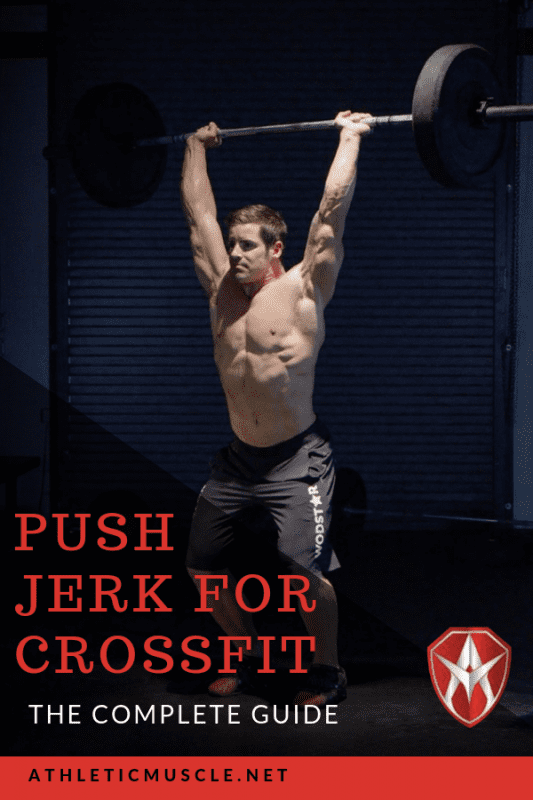
The push jerk develops shoulder strength, coordination, and an ability to sequence movements for CrossFit athletes.
The biggest benefit of the push jerk in CrossFit, however, is that it’s one of the best ways to max out how much weight you can put overhead.
At the CrossFit Level I certification, new coaches learn you can estimate your three overhead lifts (shoulder press, push press, push jerk) by adding 30% to each.
So if you shoulder press is 95lbs, you can expect to push press around 125lbs. With this amount on the push press, you can expect to push jerk around 160lbs.
What Muscles Are Worked
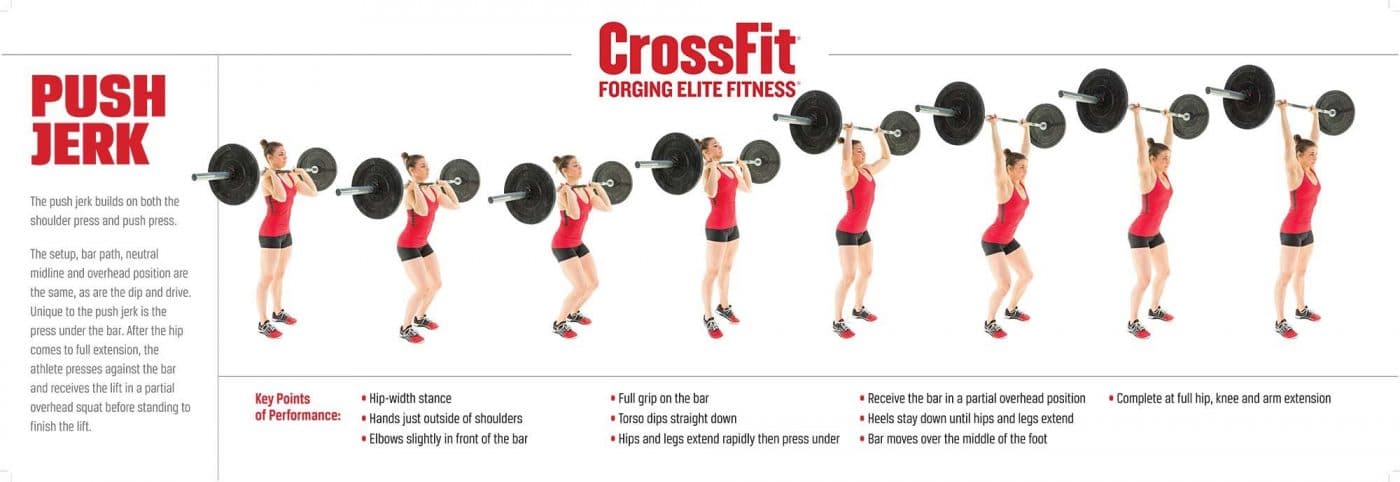
In the push jerk, your shoulders, triceps, hips, abdominals, glutes, quads, and calves are being worked. Like most CrossFit movements, you are using your whole body to perform a compound movement.
Moving the bar overhead in this way requires more than just strong arms and shoulders.
You use your lower body and core muscles throughout the lift.
Before you begin the “dip” portion of the push jerk, in the “catch” portion of the lift, and in the setup for the next repetition.
Push Jerk vs. Power Jerk
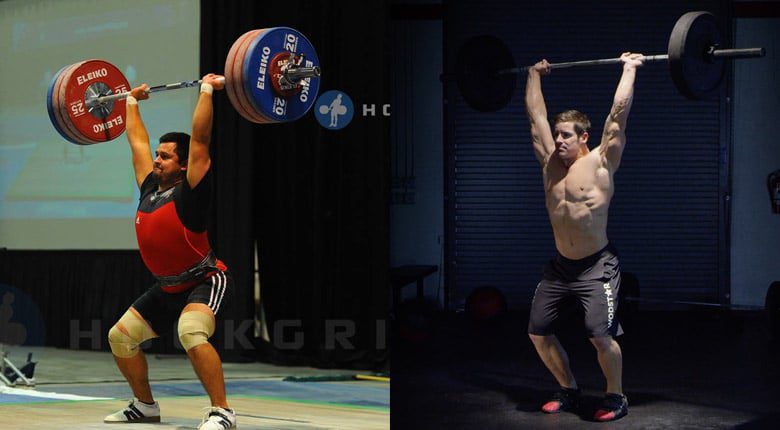
The push jerk and power jerk are both essential accessory movements for a strong Olympic weightlifting total.
The difference between a push jerk and a power jerk is in the feet.
When performing the push jerk, an athlete’s heels can leave the floor as he drops under the bar to receive it in the “catch”.
When performing the power jerk, an athlete’s feet can leave the floor completely.
This mirrors more closely the requirements of a split jerk, which is the preferred overhead movement for most Olympic weightlifters.
Read Also: What is the best weighted vest for CrossFit?
Push Jerk vs. Push Press
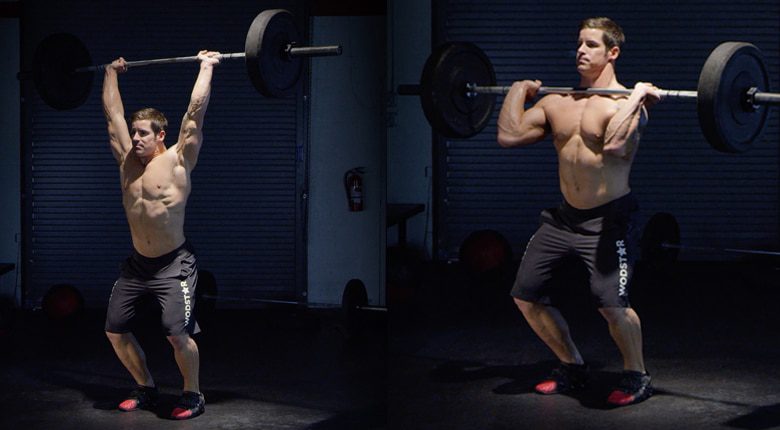
Both the push jerk and the push press are considered fundamental movements by CrossFit.
The difference between the two lifts is the “catch”, or the dropping underneath the bar, portion of the push jerk.
When performing a push press, your max will be determined by how much you can move simply dipping and then driving the bar to a lock out.
With the push jerk, technique plays a bigger role. Athletes that can time their drop under the bar to lock it out will certainly be able to lift more weight than with the traditional push press.
As mentioned earlier, athletes can expect to roughly push jerk 30% more weight than they push press, assuming technique is sound for both lifts.
Dumbbell Push Jerk vs. Barbell Push Jerk
The dumbbell push jerk is performed the exact same way as the barbell push jerk, only with different equipment.
If you have shoulder or wrist injuries that make it uncomfortable to sit in the front rack position, try the dumbbell push jerk.
The dumbbells may feel more comfortable as they can rest on your shoulder with a neutral grip.
Push Jerk Technique
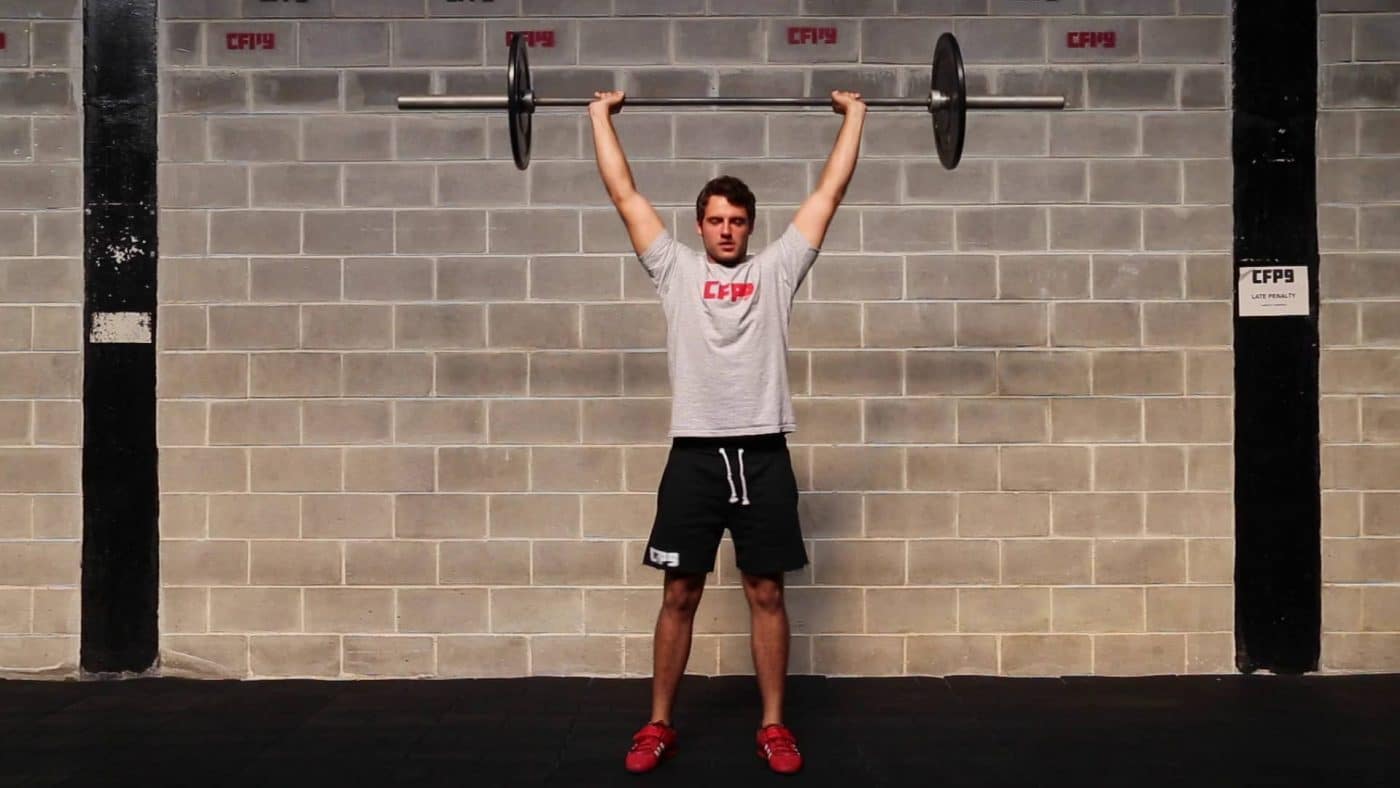
Here are a few pieces of technique to hone in on for beginners when performing the push jerk in CrossFit:
- Stay back on your heels. Many new CrossFit athletes have the tendency to dip forward onto their toes as the loaded barbell on the front of their body makes this easy to do. Remember, your heels are the starting point for generating power through the floor as you initiate the lift.
- Start light until you get the technique. You want to start light before making 30% jumps in weight from your 1RM push press. Learning the sequence of events on the push jerk takes time and you probably won’t do it right immediately. Having a good coach watch you can accelerate this process.
- Get your head out of the way. Like with any overhead lift, the bar must move past your head without hitting your chin or face. This is one reason why you should start light.
- Finish each rep. Because you’re constantly dipping to drive the next rep overhead, make sure you fully lock the bar out and pause for a second at the top before beginning the next repetition. Don’t bend your knees to start the next rep until the bar is back at your shoulders.
Push Jerk For CrossFit Wrap-Up
The push jerk is 1 of 9 fundamental, compound CrossFit movements and an oft-used accessory lift for Olympic weightlifters.
It requires a combination of strength, coordination, timing, and overhead mobility.
Break the 4 steps of the push jerk down into these cues: the “dip”, “drive”, “catch”, and “stand”. To review those steps, look at the descriptions above.
The difference between a push jerk and a power jerk lies in how your feet interact with the floor. During a push jerk, your heels will leave the floor, but not your whole foot.
In the push press, your heels will also leave the floor, but there is no “catch” phase under the bar like with the push jerk.
Start light, get fast, and understand the technique before you start piling on weights. Pretty soon, you’ll be setting overhead PRs and moving through workouts much quicker. Enjoy this guide!

